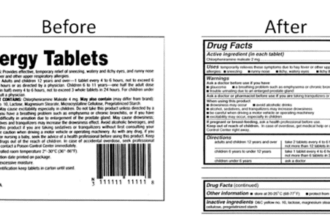 Rates of re-hospitalizations for elderly Medicare beneficiaries are a source of crisis within the healthcare system.
Rates of re-hospitalizations for elderly Medicare beneficiaries are a source of crisis within the healthcare system.
 Rates of re-hospitalizations for elderly Medicare beneficiaries are a source of crisis within the healthcare system. Nearly one in five seniors returns to the hospital within one month of discharge, yet research shows 75% of readmissions may be preventable.
Rates of re-hospitalizations for elderly Medicare beneficiaries are a source of crisis within the healthcare system. Nearly one in five seniors returns to the hospital within one month of discharge, yet research shows 75% of readmissions may be preventable.
Since hospitals stand to lose more than $280 million in Medicare funds under the new Affordable Care Act measure, many institutions are scrambling to find innovative solutions to enhance care transitions.
Where are the opportunities for innovation to reduce hospital readmissions?
Public and private organizations are now launching new initiatives to identify the underlying causes of hospital readmissions and to develop innovative strategies to prevent re-hospitalizations among vulnerable seniors.
Improving transitions from the inpatient hospital setting to other care settings, such as the home, through more effective discharge planning, adoption of care management programs, and payment reforms are hallmarks of success.
Evidence from Medicare’s Quality Improvement Organizations (QIOs) and The Institute for Healthcare Improvement (IHI), and AHRQ suggests targeting innovation in the following areas can reduce avoidable readmissions:
- Intensive post-discharge follow-up – frequent phone calls as well as encouragement and reminders to keep appointments.
- Enhancing care coordination at the interfaces between care settings by ameliorating process breakdowns of information – Seamlessly transferring patient information from inpatient care team to post-discharge care team.
- Addressing medication discrepancies – Helping patients understand how to use medications and warning signs that would warrant and emergency call to the physician.
- Providing coaching and patient education – providing patients comprehensive information instructions on self-care and medication management
- Supporting patient self-management – equipping patients with digital tools to document care and communicate with the care team
- Home health care services for high-risk populations, especially COPD patients
The role of technology in lowering readmissions
Identifying issues and intervening early in the home can help decrease acute care visits and exposure to preventable readmissions.
Receiving actionable data from the home is key to reducing emergency room visits and avoidable hospital readmissions for an especially high-risk population of seniors and individuals with chronic illness.
eCaring’s unique integration of in-home clinical and behavioral data helps care managers determine who is at risk for readmission, buffering hospitals from expensive Medicare penalties. It enables patients to live at home longer at lower costs, lowering the burden on themselves and their families.
What cannot be avoided
As the healthcare field continues to evolve innovative programs and technological solutions for improving care transitions, quality of care, and reducing readmissions advocates and policymakers caution not to lose sight of the bigger picture.
In many situations hospitalization for a patient experiencing health complications is both necessary and appropriate. Imposing measure to reduce re-hospitalizations alone is the wrong approach. Reducing readmissions under the Affordable Care Act, rather is an opportunity for developing new models and tools that help healthcare providers understand and treat factors underlying readmissions that occur beyond hospital walls.






[1].gif)

